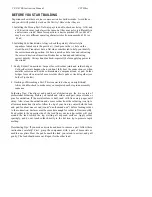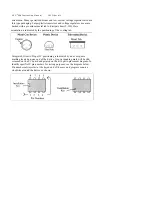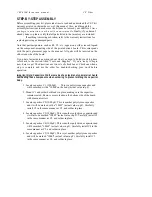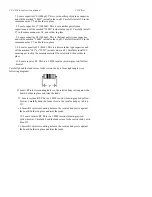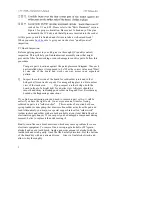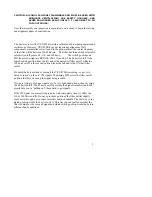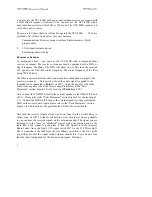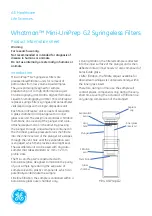
CAUTION: ALCOHOL IS HIGHLY FLAMMABLE AND MUST BE USED WITH
ADEQUATE VENTILATION! USE SAFETY GOGGLES, AND
AVOID PROLONGED SKIN CONTACT. IT
'
S ALSO BEST TO DO
THIS OUTDOORS.
Now that assembly and inspection is completed, you're ready to begin the testing
and alignment phase of construction.
The best way to test the VEC-820K is with a calibrated audio signal generator and
oscilloscope. However. VEC-820K does not require any alignment. If all
components are installed correctly and in the proper places, the center frequency
of the filter will be between 750-800 hertz. The filter has three switch selectable
selectivity cutoff points, 80, 110. and 180 hertz_.
The switch positions on
SWl from left to right are BYPASS. 180. 110, and 80. The 80 hertz cutoff is the
fourth switch position from the left and is the narrowest filter cutoff. while the
180 hertz cutoff is the second position from the left and is the N%idest filter
cutoff.
Probably the best method of seeing if the VEC-820K is working, or not, is to
listen to some "on the air" CW signals. Then using SW1, select the filter cutoff
position that best cleans up the signal being received.
If you are trying to pick one signal out of a very tight band pile up, then try using
the 80 hertz cutoff. The 80 hertz cutoff provides the highest selectivity and will
greatly help you in "pulling out" those hard to get signals.
If the CW signal you are receiving is noisy with some static, then trv either the
110 or 180 filter cutoffs. However, in these positions the filter will let slightly
more noise through. but in some cases this may be desirable. The best way to see
which position works the best is to try it. This way you can really hear what the
filter is doing for the received signal, and which switch position works the best in
different band conditions.
1



